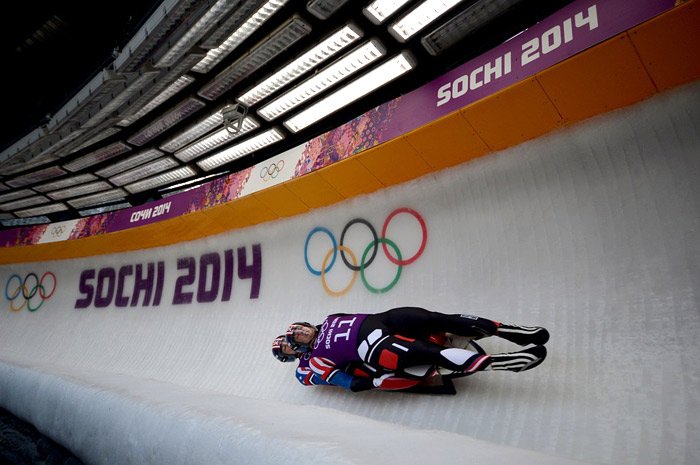
Luge is a Winter Olympic sport. It uses a small one- or two-person sled, on which the participants slide down the mountain face up and feet first. Racing sleds weigh around 21 to 25 kilograms for singles, and 25 to 30 kilograms for doubles. The lugers can read the speed of up to 140 kilometers per hour.
 double luge at the Sochi Olympics
double luge at the Sochi Olympics The term luge was first used in 1905. It’s from the French Savoy/Swiss dialect which means small coasting sled. The governing body for Luge is the Federation Internationale de Luge de Course. A team consisting of one or two can participate. Both men and women can race but usually in separate competitions.
Luge is held on either artificial tracks or natural tracks. Natural tracks are on existing mountain roads and paths. The participants equip themselves with a sled, helmet, suit, visor, gloves, finger spikes, and booties. The four luge disciplines are: men’s singles, doubles or mixed event, women’s singles, and team relay which is now an Olympic discipline.
Similar Sport
- Streetluge — participants race downhill feet first on a sort of modified skateboard.
- Skeleton — participants ride a small sled down a frozen track facing forward with the face down.
- Bobsleigh — winter sport on a sled making timed runs down narrow, twisting, banked, ice tracks.


 Current Events
Current Events